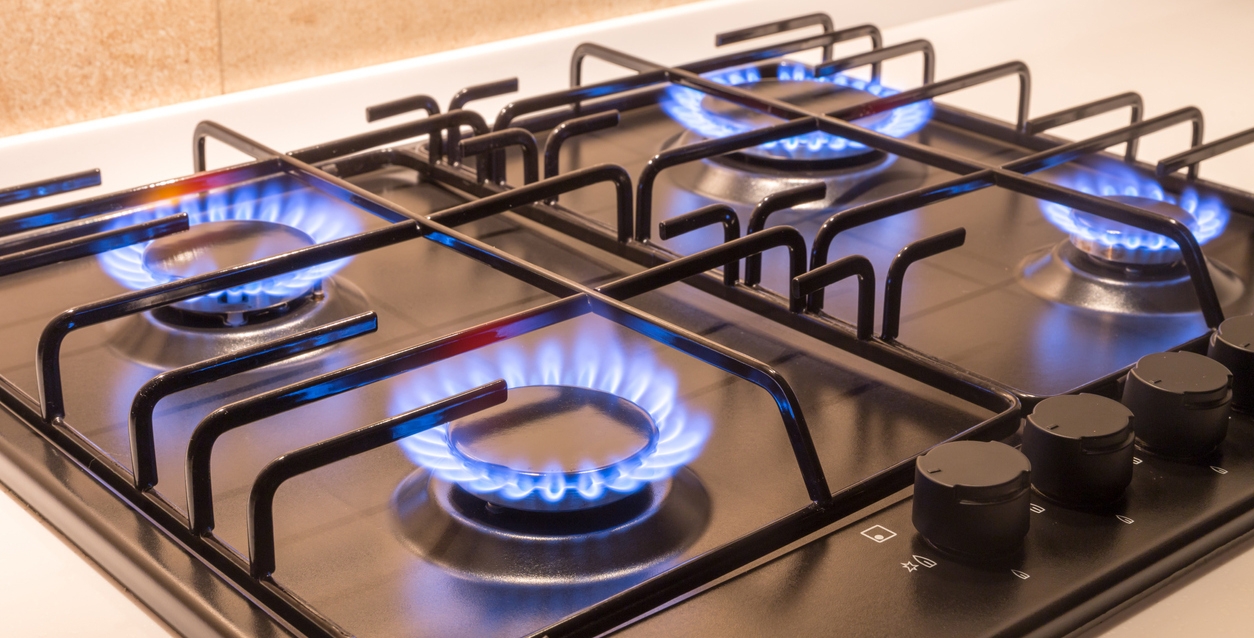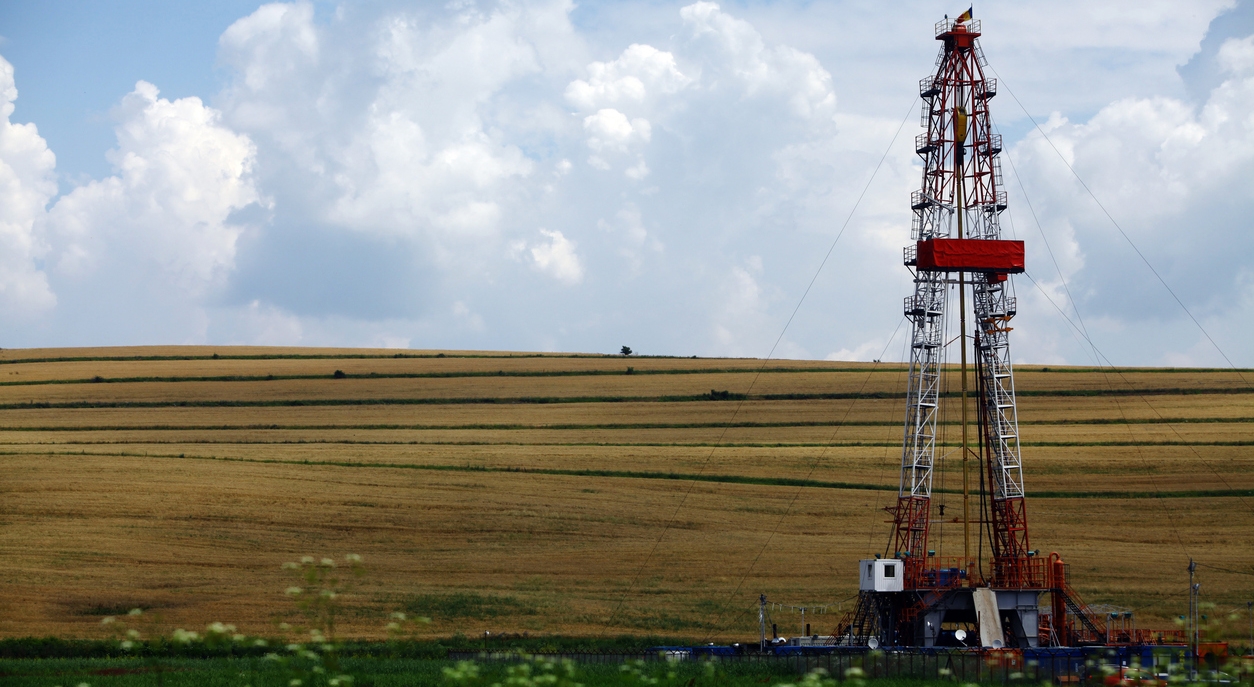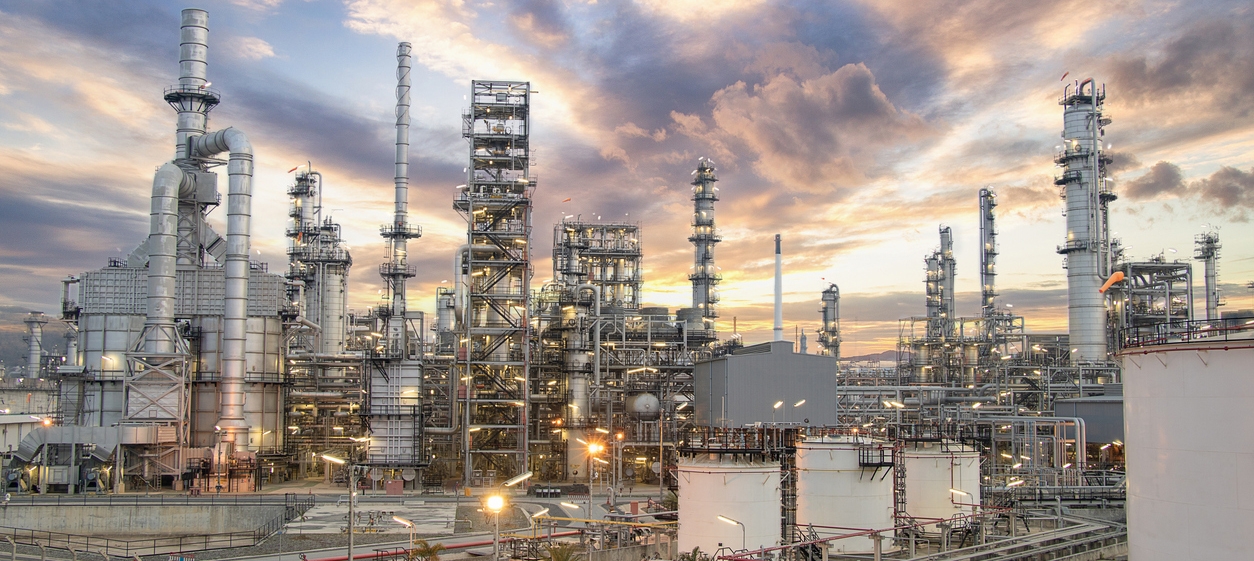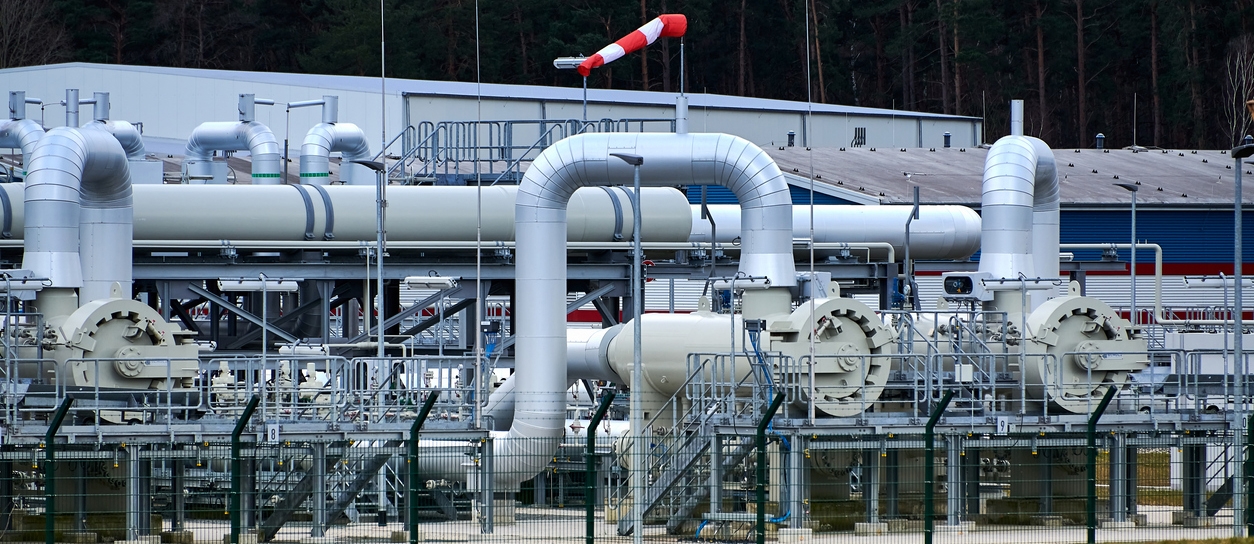Background
Natural gas is one of the most essential things in our lives, and it is also something that we use every single day. Without natural gas, we won’t be able to power our homes and businesses with electricity, as well as heat and cool them. Aside from that, it also fuels many transportation fleets and trucks that deliver goods to markets. Natural gas is also essential when it comes to manufacturing the goods that we consume. This means that it is essential, from laundry detergent and water bottles to insulation in homes and more. In short, it is a key ingredient in almost every product that people use every day, and we all depend on it to support every sector of our economy.
Since we use natural gas every day, have you ever wondered where it comes from and how it reaches our homes and businesses? What most of us know is that natural gas is brought to our homes by utility companies through pipes installed in our houses, and we pay for it on a monthly basis. But how can utility companies do this? What do you think are the processes or steps taken to extract natural gas and deliver it to homes or businesses? If you are also curious about this, you’re in the right place. In this post, we are giving you more information on how exactly natural gas gets to homes and businesses.
What is Natural Gas?
According to National Geographic, natural gas is a fossil fuel. Similar to fossil fuels like oil and coal, it forms from the plants, animals, and microorganisms that lived millions of years ago. There are various theories that explain how fossil fuels are formed. The most popular theory is that they form underground under intense conditions. As animals, plants, and microorganisms decompose, they are slowly covered with layers of soil, sediment, and rock. The organic material is compressed over millions of years, and as it sinks deeper below the Earth’s crust, it is exposed to ever-higher temperatures. [1]
Compression and high heat cause the organic matter’s carbon bonds to break down. This produces thermogenic methane, which is a type of natural gas. Methane is possibly the most abundant organic compound on Earth, and it is made of carbon and hydrogen. The deposits of natural gas are usually found near oil deposits. They are close to the surface of the Earth and are mostly dwarfed by nearby oil deposits. Deeper deposits can be made up of purely natural gas.
However, natural gas does not necessarily have to be formed deep underground as it can also be formed by microorganisms called methanogens. These are found in the intestines of both people and animals, and they flourish in low-oxygen regions close to the Earth’s surface. One example are landfills, which are full of decomposing matter that methanogens break down into a type of methane referred to as biogenic methane. This process is called methanogenesis. [1]
In addition to methane, natural gas also contains other hydrocarbon and non-hydrocarbon components. A hydrocarbon pertains to any compound composed of both carbon and hydrogen. They are usually found in fuel sources such as petroleum and natural gas. Natural gas also contains hydrocarbon gas liquids (HGLs), such as ethane, butane, and propane. They would be gaseous at atmospheric pressure but condense into liquid form at extreme pressures, such as those found beneath the surface of the earth or in pressurized containers. Natural gas also has non-hydrocarbon gasses, such as carbon dioxide, vapor, and water. [2]
Various Types of Natural Gas Energy
As mentioned earlier, natural gas contains various hydrocarbon and non-hydrocarbon components. To further understand what they are, below are the various types of natural gas energy:
Methane
Before consumers can use natural gas, it is first stripped down to methane. It makes up the majority of pure natural gas. Methane is highly combustible and can be used for different energy purposes. However, in order to burn it, it must first be separated from the natural gas present in oil, gas, and condensate wells. After being converted from natural gas, it is utilized to produce electricity using steam and gas turbines. Additionally, it is transported through pipelines to residences where it is utilized for cooking, heating, and other significant household chores. [3]
Ethane
The second most abundant source of energy in natural gas is ethane. It is a byproduct of petroleum refining and a hydrocarbon. Compared to methane, ethane has a higher heating value, and it is used in various ways after being isolated from natural gas. After separating it from natural gas, ethane is often used to produce ethylene and polyethylene products, such as packaging, insulation, wire, trash liners, and more. [3]
Propane
Propane is a rich energy source found in natural gas, and it is processed in gas or liquid form. It is usually found in pipeline gas and used for different purposes. Most of the time, propane is used for fueling engines, cooking with stoves, and central heating in homes and buildings. It is also used for barbecue grills because of its high-energy output and portability. There are also vehicles that are fueled on propane, and it is used by homes for fueling the furnace and water heaters. [3]
Butane
Butane is also a hydrocarbon found in natural gas. Though it is not as abundant as other hydrocarbons, it is still a viable energy source that is used for different purposes. During natural gas processing, butane is isolated, and it makes up about 20% of the natural gas composition. Most of the time, it is a component of automobile gas. Aside from that, lighters and refrigeration units also use a large amount of butane as fuel. Butane is also used by aerosol cans as a propellant. However, it was flagged as harmful to the environment. [3]
How Is Natural Gas Located and Extracted?
At the present time, natural gas is extracted in the United States and many other countries. Around 75% of global natural gas reserves can be found in the Middle East, the former Soviet Union, and Europe. About 4% of the natural gas in the world is produced by the United States, and that is enough to supply our needs. In fact, more than 90% of the natural gas used in the US comes from domestic sources. There are around 32 states that produce natural gas, including New Mexico, Oklahoma, Texas, Louisiana, and Wyoming, which account for more than half of production.[2]
One of the tools that geologists use in locating natural gas is the seismic survey. It involves sending seismic waves through the earth, observing their behavior, and using the resulting data to determine the nature of rock formations. They often use large vehicles called thumper trucks that use vibrating pads to thump the earth and create seismic waves. Explosives are also sometimes used. Seismic surveys of the ocean floor, on the other hand, use bursts of sound to generate sonic waves.
After geologists conclude that an area may hold natural gas deposits, the next step is to drill an exploratory well. This allows access to natural gas so that scientists would be able to assess its quality and estimate the volume of gas available. There are two ways how natural gas is extracted:
Drilling
Gas companies usually drill for conventional natural gas. Wells are drilled into the earth, approaching the natural gas reservoirs either horizontally or vertically. Then, natural gas flows through wells to the surface of the earth, where companies get it and send it through pipelines for processing and refining. [2]
Hydraulic Fracturing
This process of natural gas extraction is also called fracking. It forces pressurized chemicals, sand, and water into shale or sandstone rock formations, which are difficult to penetrate with traditional wells. Doing this pulverizes the rock formations and enables the natural gas to rise through wells to the surface of the earth. This process is mostly used by companies to gather unconventional natural gas. [2]
Processing and Refining Natural Gas
Before natural gas gets to homes and businesses, it usually goes through various processing and refining steps. These include separation, removal of impurities, compression, and addition of odorants.
Separation
The first step once natural gas comes out of the pipeline is separation. In this step, oil and water are removed from the gas. Most of the time, for safety or operational reasons, the gas is then vented and flared. The process of venting releases a small amount of gas into the atmosphere while flaring burns gasses that would otherwise pose safety hazards. Then, the gas goes to a gas processing center for further refining. [2]
Removal of Impurities
The natural gas that comes out of the pipeline is called wet natural gas as it contains NGLs like ethane, propane, and butane, along with some water vapor. In addition to that, it also contains other compounds, such as sulfur, carbon dioxide, helium, and nitrogen. These compounds should be removed by processing plants as they are often sold separately for other uses, such as those we’ve mentioned earlier. Once the impurities are removed, the natural gas is known as dry or consumer-grade natural gas. Once again, it is vented and flared for safety, then sent out along the next pipeline. [2]
Compression
After going through the processing plant, the natural gas then passes through a series of compressor stations. These are often located around 50 to 60 miles apart along the gas pipeline. As the gas passes through the pipeline, it loses some pressurization to the friction of traveling along the steel pipes. However, the compressor stations compress the gas again so that it can flow easier through the pipeline. The gas may also go through scrubbing and filtering at a compressor station to remove any lingering impurities. [2]
Addition of Odorants
When natural gas comes out of the wellhead, it is odorless. However, odorless combustible gas is dangerous for consumers to use as it can be hard to detect a gas leak and may lead to explosions and fires. Therefore, when natural gas reaches a gate station, which is a local receiving station that receives gas from several different pipelines and lowers its pressure for distribution, odorants are added to give the gas an unpalatable smell. [2]
How Does Natural Gas Reach Homes and Businesses?
After learning about how natural gas is located, extracted, and refined, let’s go back to the original question, which is how does it reach our homes and businesses? The answer to this is that natural gas transmission pipelines move natural gas from production fields to markets. These are wide-diameter pipelines and are usually long-distance parts of natural gas pipeline systems that connect gathering systems in producing areas, natural gas processing plants, other receipt points, and the main consumer service areas. [4] Below are the different channels which natural gas flows through to reach homes:
Distribution Pipeline
Generally, natural gas flows outward from the distribution center through a distribution pipeline. It contains safety valves to prevent leaks in populated areas.
Gas Mains
When the gas reaches the designated area, it usually flows toward homes through a gas main, which can be as small as 2 inches in diameter or as big as 2 feet or more. It delivers natural gas to a certain neighborhood. Gas mains are buried underground and can travel easily beneath parks, streets, sidewalks, schools, and driveways. [2]
Service Line
When the gas has reached the neighborhood, it flows through a smaller natural gas service line to get to homes. [2]
Meter
This is an essential point at the station of the natural gas service line. The gas meter at home measures natural gas use. In addition to that, it also contains a pressure regulator that reduces the pressure of the gas to a safe 0.25 pounds per square inch (PSI). [2]
Residential Pipes
Beyond the gas meter, the gas flows safely through the pipes installed at home, going to gas appliances, such as a furnace, water heater, and stove. [2]
Infographic on How Natural Gas Get to Homes and Businesses
To summarize the processes of getting natural gas and delivering it to homes and businesses that we’ve mentioned above, take a look at the infographic below:
Uses of Natural Gas at Home
In the United States, natural gas supplies around 24% of residential energy. Some might not be aware of its uses, but most of us utilize natural gas at home on a daily basis. Below are some of the uses of natural gas at home:
Heating Systems
One of the top uses of natural gas at home is the heating system. Heating systems that are powered by natural gas are great choices as they are dependable, comfortable, and efficient. Also, compared to electric heat pumps, natural gas heaters are warmer. An electric heater can heat a home at between 85 to 95 degrees Fahrenheit. Natural gas heat, on the other hand, flows into a home at 120 to 140 degrees Fahrenheit, heating a home faster and more comfortably.[2]
Cooking Appliances
Next to heating systems, another main use of natural gas at home is cooking appliances. Gas ranges are very popular cooking appliances used at home. They can provide consistent heating, superior temperature control, and instantaneous on and off. Did you know that gas stoves that use spark ignition instead of a pilot light can help you save around a third on energy costs? [2]
Dryers
The energy needed to power dryers is also commonly supplied by natural gas. Dryers powered by natural gas are reliable and efficient, and they also produce less static cling, wrinkling, and shrinking compared to other dryer models. In addition, natural gas dryers can sense moisture and heat levels and turn off automatically, which reduces energy consumption. [2]
Water Heaters
The energy needed to power water heaters at home is also commonly supplied by natural gas. The water heater is the second-biggest consumer of energy at home next to the central heating system. On average, a gas water heater is more economical to operate compared to an electric water heater. Also, it can heat water twice as fast. [2]
Gas Fireplaces
During the winter season, it is really nice to curl up by a cozy fire. However, cutting and stacking firewood, as well as building, tending, and putting out a fire, can be a chore. That’s why a lot of homes invest in gas fireplaces, as they are convenient, affordable, and efficient in creating a warm and cozy fireplace during the winter days. [2]
Industrial Uses of Natural Gas
In addition to being used at home for various tasks, natural gas is also widely used by industrial companies. It is used in more than one way to serve the needs of various industries, including petroleum, chemical, energy, plastic, metal, glass, mining, refining, and food processing. Mainly, it is used as a source of heat and raw material. Below are some of the uses and applications of natural gas for the industrial sector:
Manufacturing
Natural gas is widely utilized in the manufacturing industry. It is used in manufacturing processes as raw material and a source of heat. It is a basic ingredient when making fertilizers, plastics, fabrics, and pharmaceuticals. In addition to that, it is also used in producing chemicals like ammonia, methanol, butane, propane, and acetic acid. Aside from that, natural gas is also utilized as a source of heat to serve the manufacturing processes, such as for melting, baking, glazing, or drying a product. It is also used for manufacturing glass, cement, steel, ceramics, bricks, paper, and food products. [5]
Power Generation
Power plants utilize natural gas to produce electricity. It is a great source to generate electricity for residential, commercial, and industrial purposes. It is also a safe choice as it releases a lesser percentage of CO2 than burning coal or oil. Industries that are big consumers of electricity are consuming power made of natural gas. These include the mining industry, refining industry, manufacturing units, and more. [5]
Metal Industry
Natural gas is also used in the metal industry through infrared heating units. They are the most inexpensive and advanced heaters to produce heat. They use natural gas to heat raw materials quickly, which are used in manufacturing iron and steel. Natural gas is mixed with ceramic fibers entailing platinum catalyst to increase the temperature by causing an oxygen reaction. The whole process does not even involve producing a flame. A lot of metal producers are using the same method to quickly do their manufacturing activities, such as welding, shearing, casting, punching, folding, and more. [5]
More Interesting Facts About Natural Gas
It is amazing to learn that natural gas passes through various processes before it reaches our homes and businesses. If you are eager to learn more about it, below are more interesting facts about natural gas that you need to know:
- Lightning strikes that ignited natural gas seeping from the earth are said to have led to the discovery of natural gas in the Middle East between 6,000 and 2,000 BC.
- The first natural gas pipelines were built in China back in 500 BC. The lines are made of bamboo, and they moved gas which was utilized to create evaporated salt brine.
- French explorers observed Native Americans lighting gasses flowing into and around Lake Erie in 1626, which led to the discovery of naturally occurring natural gas in the United States.
- The first natural gas utility in Baltimore, USA, was founded by Rembrandt Peale, a popular portrait painter, in 1816 after he used natural gas as an energy source to light an exhibit at his gallery and museum.
- When former rail conductor Colonel Edwin drilled the first well and discovered oil and natural gas 69 feet below the earth’s surface, the American industry truly took off.
- The two of the most common uses of natural gas in the US include electricity generation and transportation.
- In addition to being originally odorless, natural gas is also tasteless and colorless.
- Almost 69 million households in the United States use natural gas.
- The highest percentage of natural gas in the United States is produced by Texas, which is at 22%.
- When it comes to moving toward higher energy efficiency, natural gas is a more efficient way to produce energy than electricity.
- Methane gas makes up the majority of natural gas used for heating appliances.
- Nine out of ten cooks prefer working on a natural gas stove to one that is electric.
- Every day, more than 72 million people depend on natural gas.
- Over 11 million cars run on natural gas worldwide.
- When compared to other fossil fuels, natural gas burns with much lower emissions of carbon dioxide, sulfur, nitrogen, and particulates. As stated by the U.S. Environmental Protection Agency (EPA), just 4% of all greenhouse gas emissions in the United States come from residential natural gas use.
- The first nation to commercialize natural gas was Britain. Natural gas was used to power street lights and dwellings in the late 1700s. The US’s first city to deploy natural gas street lamps was Baltimore, Maryland, in 1816.
- Natural gas turns into liquid at a temperature of -260 degrees Fahrenheit.
- Natural gas is flexible because it is a ready source of “fuel on demand” that can be used as a primary, secondary, or emergency energy source.
- According to the American Gas Association, using natural gas for cooking, drying clothes, and boiling water can save a typical new home $900 a year.
- More than 4 million people are employed by the natural gas sector as a whole, which also brings in $550 billion for the American economy. The American Petroleum Institute’s definition of GDP.
Conclusion
It is indeed interesting to learn about the processes of locating, extracting, and refining natural gas and how it gets delivered to homes and businesses. By learning all about it, the next time you use your gas range or gas heater at home, you now know where the natural gas being used comes from and how it was able to reach your home and appliances. We hope this post helped you learn more about how natural gas gets to homes and businesses.
References
[1] National Geographic, E. (n.d.). Natural gas. National Geographic Society. Retrieved September 12, 2022, from https://education.nationalgeographic.org/resource/natural-gas
[2] Shipley Energy, E. (2022, September 8). How does natural gas get to my home & how is it used? Shipley Energy. Retrieved September 12, 2022, from https://www.shipleyenergy.com/resources/energy-guides/how-does-natural-gas-get-to-my-home-and-how-is-it-used/
[3] Mitchell, K. (2019, March 2). Types of natural gas energy. Sciencing. Retrieved September 12, 2022, from https://sciencing.com/types-of-natural-gas-energy-13661319.html
[4] U.S. Energy Information Administration, E. (n.d.). U.S. Energy Information Administration – EIA – independent statistics and analysis. Delivery and storage of natural gas – U.S. Energy Information Administration (EIA). Retrieved September 12, 2022, from https://www.eia.gov/energyexplained/natural-gas/delivery-and-storage.php
[5] Anderson, A. (2020, May 4). 3 industrial uses of natural gas. NetNewsLedger. Retrieved September 12, 2022, from https://www.netnewsledger.com/2020/05/04/3-industrial-uses-of-natural-gas/
[6] Killian, K. (2020, July 2). Fun facts about natural gas. UGI EnergyLink. Retrieved September 12, 2022, from https://ugienergylink.com/fun-facts-natural-gas/
[7] Contributor, S. (2015, February 4). Statoil brandvoice: 16 amazing facts about natural gas. Forbes. Retrieved September 12, 2022, from https://www.forbes.com/sites/statoil/2015/01/12/16-amazing-facts-about-natural-gas/?sh=532342ed6b4e










